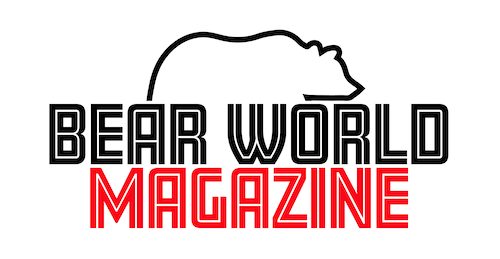The Bear Flag: Craig Byrnes and the International Bear Brotherhood Flag
Les K Wright delves into the history and development of the bear flag.
Of himself, Craig has said, “I’m not a graphic artist. I’m a visionary of ideas.” He found a home in the bear community emerging in the Washington, DC area in the early 1990s. He embraced the “bear” as a “feminist term” for a new identity at that point still “without the specific parameters of a definition.” He was a founding member of the Chesapeake Bay Bears (1993), was featured in American Bear magazine (twice) and American Grizzly, and has held several titles, culminating in International Mr. Bear in 1999. He traveled the country raising funds for AIDS charities and used his title to spread and celebrate brotherhood among his fellow bears.
In 1995 as part of his psychology degree program at Mary Baldwin College, Craig researched bear community for his senior project. He couldn’t let go of the idea of including a flag in his project. His friend Bob Nicholson bought him a box of crayons. Craig scanned the colored piece he had made and asked Paul Witzkoske to help him create a graphic design. Craig took the four graphics and Bob Nicholson sewed the first four templates. Here the minutiae of the flag’s history gets complicated—the issue of the original colors not having exact pantone equivalents, the tweaking of design elements (a green stripe, designs of the bear paw). All four (machine-sewn 3’ x 5’) prototypes were exhibited at the Chesapeake Bay Bears “Bears of Summer” event in 1995 and were voted on.

The winner is the flag now officially called the International Bear Brotherhood Flag. It consists of seven horizontal stripes in various shades of brown (dark brown, rust, golden yellow tan, white, gray, black) with a black bear paw in the upper lefthand corner. The colors reflect real-world species of bears and are intended to celebrate the inclusivity and diversity of men in the bear community. Craig copyrighted the IBBF. I was present at the bear event when he officially handed the flag over to the bear community, placing it into the public domain. . (It should be noted that Craig did not profit personally from his efforts. He had to be creative to secure funds for the original flag project. Unlike the usual practice of a club funding a titleholder’s travel expenses to promote bear community, Craig paid his own way. He created a company, Bear Manufacturing, and produced and sold bear merchandise. As he learned the hard way, the bear community at the time was not large enough for such a business to sustain itself. Craig donated his profits to the bear community.)
Are you a flag nerd? There’s a word for that—vexillologist. A vexillologist collects and studies the history of flags. It’s variant of the mania that the philatelist suffers. (I am both.) Along with the IBBF there are three other variant flags. Other early bear flags appeared prior to the adoption of the IBBF by popular acclaim as the official bear flag. There have been regional bear flags. The expansion of sex and gender identities under the queer umbrella has been reflected in the still changing variants of the (gay pride) rainbow flag. Similarly, new variants of the bear flag have been created to reflect this diversity in the bear community.


Today there is a historical marker in Washington, DC noting “DC and the development of the International Bear Brotherhood Flag.” It is in the Bloomingdale neighborhood of Northwest Washington. It hangs on a gate in an alley behind T Street Northwest.


















